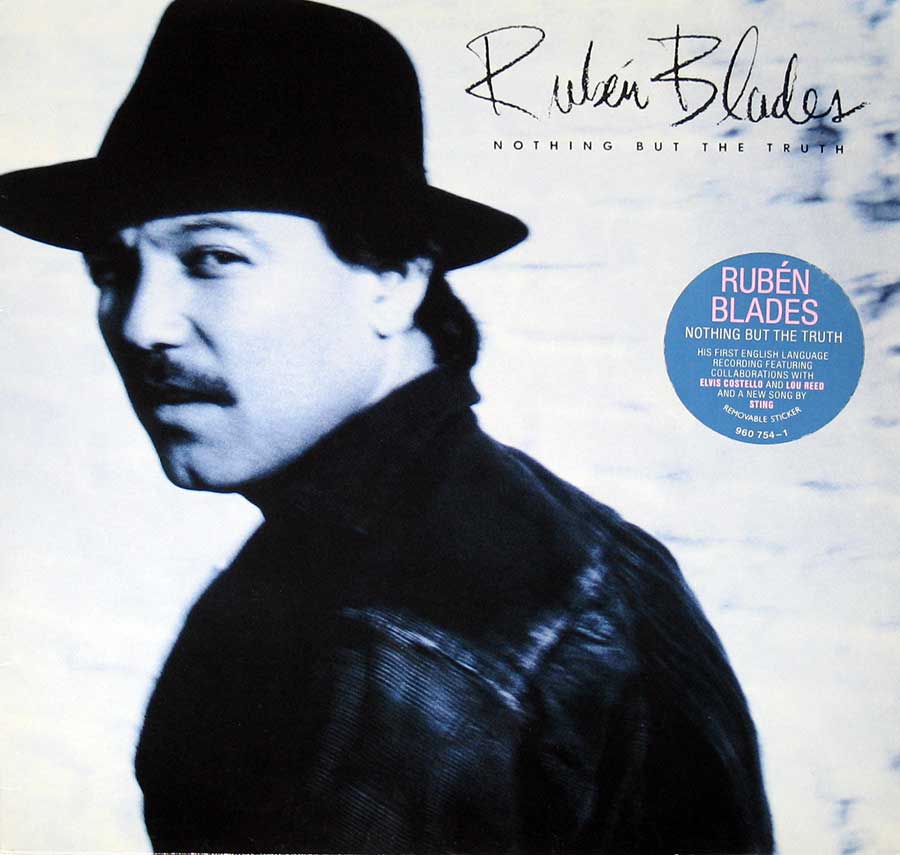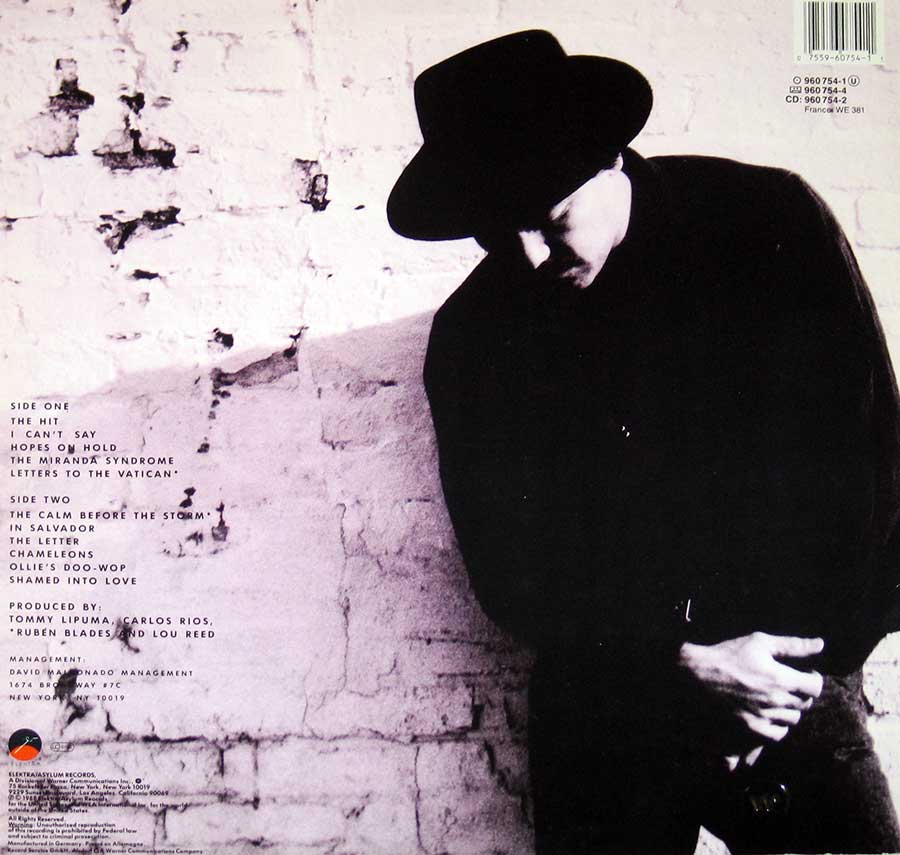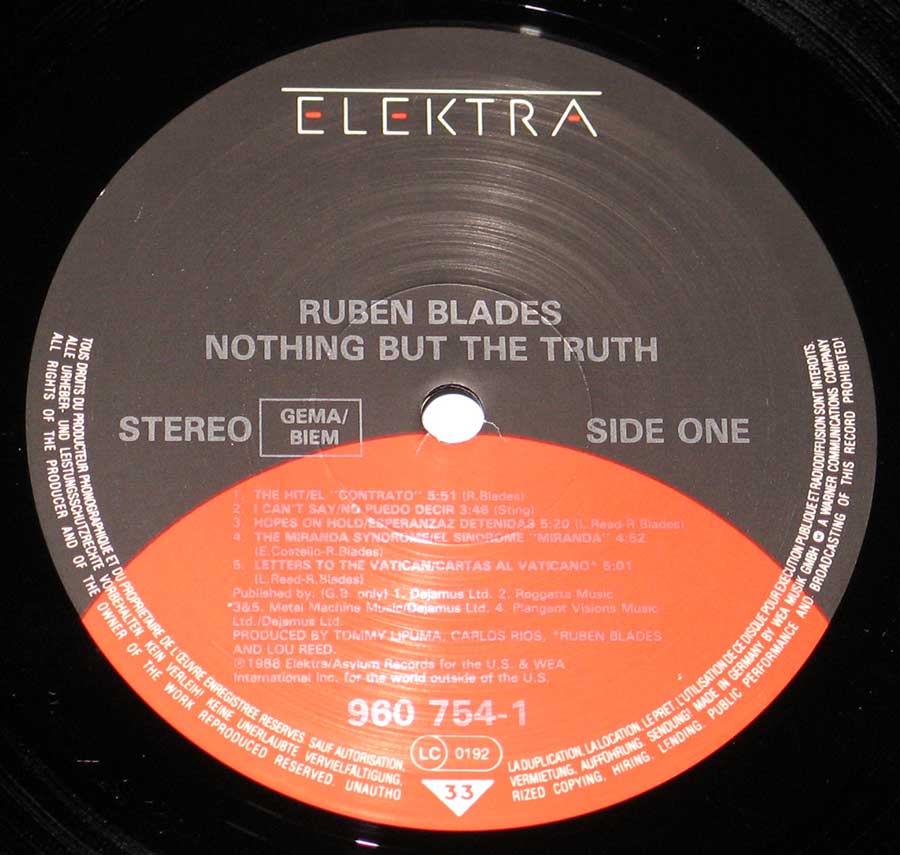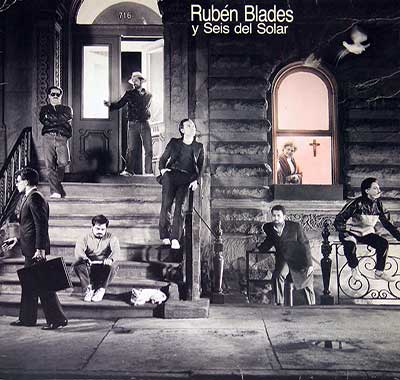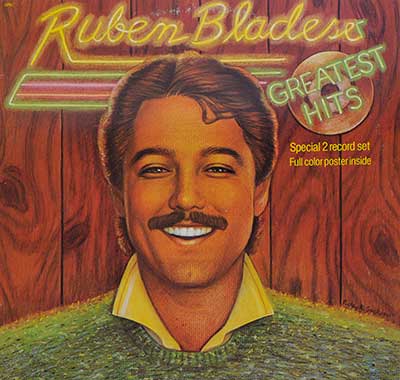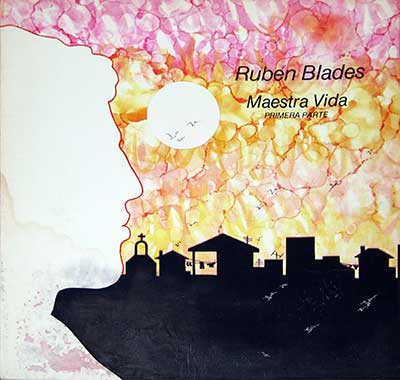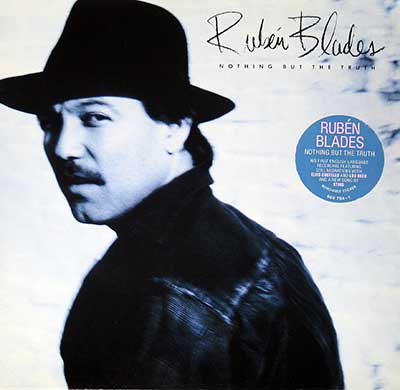RUBƒN BLADES – Nothing But the Truth Album Description:
A Bilingual Revolution in Sound
In 1988, the world tilted on its rhythmic axis. RubŽn Blades, the Panamanian sage of salsa and social commentary, stepped into the English-speaking world with an album that was less crossover and more confrontation. Titled "Nothing But the Truth", this LP was not a detourÑit was a deliberate expansion. The result was an album that married Latin jazz and salsa with rock, funk, and noir poetry. Think of it not as translation, but as transformation.
Historical Backdrop
By the late 1980s, Blades was already an icon in Latin AmericaÑa voice that chronicled injustice with both elegance and edge. The Cold War was fraying, U.S. intervention in Central America was fresh on the headlines, and Reaganomics had polarized the hemisphere. It was against this backdrop that Blades, no longer content to sing only to the converted, delivered a message to the English-speaking world.
Musical Explorations & Lyrical Grit
The album opens with "The Hit", a dark, brassy groove that sounds like Tom Waits had a lovechild with a salsa horn section. Blades doesn't so much sing as testify, backed by arrangements that are as tight as they are unexpected. Tracks like "The Miranda Syndrome" and "Letters to the Vatican" read like dispatches from a political frontlineÑpoetry in minor key, shrouded in irony.
And then there's "Shamed Into Love", co-written with El Lou Reed himselfÑa pairing that could have been oil and water but instead smolders with restrained anguish. Reed, ever the urban prophet, brings grit; Blades, the emotional arc.
Genre-Blurring Brilliance
Call it Latin Jazz. Call it Tropical Funk. Call it New York Noire. "Nothing But the Truth" refuses to sit still. Each track is steeped in Latin rhythmÑclave patterns, syncopated percussionÑbut layered with electric guitars, synth washes, and art-rock detachment. The horns donÕt just punctuateÑthey jab. The basslines stalk. The lyrics? They donÕt ask for attention. They demand it.
Production & Recording
Tommy LiPuma, known for his polished work with artists like Diana Krall and George Benson, took the production reins. But donÕt expect lounge jazz polish here. With additional input from Carlos Rios and Blades himself, the production walks a tightrope between commercial sheen and lyrical provocation.
Recorded under the Elektra banner (catalog number 960 754), the album was laid down in top-flight studios, likely in Los Angeles or New York, though the soul of it feels like it was pressed straight out of El Barrio.
Controversy & Cultural Friction
Was the English-language leap a betrayal to BladesÕ salsa roots? Purists thought so. But that tension is precisely what gives "Nothing But the Truth" its bite. It challenged the boundaries of ÒLatin artistÓ and dared Anglo audiences to meet Blades on his termsÑnot as an exotic flavor but as a narrative force.
Conclusion: The Truth Hurts. And He Meant It To.
"Nothing But the Truth" isn't a comfort album. It's a mirror held up to the listenerÕs assumptionsÑmusically, politically, culturally. RubŽn Blades didnÕt just step into English; he stormed in, truth in one hand, groove in the other.
